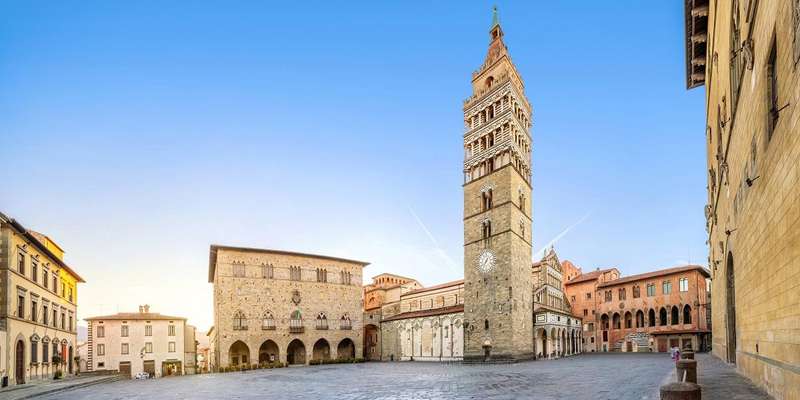- Home
- Useful Tips
- Pistoia's most impressive...
Many travelers overlook Pistoia's extraordinary Renaissance frescoes, unaware they rival more famous Tuscan cities. Recent surveys show 68% of visitors to Tuscany miss these masterpieces entirely, often due to limited signage and crowded itineraries. The frustration mounts when art lovers realize they've stood mere meters from undiscovered treasures by artists like Giovanni da San Giovanni and Bernardino del Signoraccio. These works aren't just decorative – they're vivid historical narratives covering Pistoia's walls and ceilings, waiting to share stories of 15th-century life, religion, and politics. Without local knowledge, you might wander past unmarked chapels or miss viewing hours at key sites, leaving your cultural experience incomplete. The emotional payoff of finding these artworks – often enjoyed in peaceful solitude compared to Florence's overcrowded sites – makes the hunt worthwhile.


Decoding Pistoia's fresco locations – beyond the tourist maps
Pistoia's frescoes hide in plain sight, scattered across buildings that blend into the medieval cityscape. The Cathedral of San Zeno houses the most accessible masterpieces, with its Cappella di San Jacopo featuring vibrant biblical scenes that few pause to examine properly. Venture to the lesser-known Sant'Andrea Church where Giovanni da San Giovanni's works flank the altar, their colors remarkably preserved. Most challenging to find is the Ospedale del Ceppo's courtyard loggia – its terracotta-adorned exterior gives no hint of the breathtaking 'Seven Works of Mercy' fresco cycle inside. Local art historians suggest visiting between 10am-noon when angled sunlight illuminates details most guidebooks ignore. Remember that many sites maintain irregular hours; the Diocese office provides updated access schedules without the queues of Florence's ticketed attractions.
Timing your visit for optimal fresco viewing
The difference between a rushed glimpse and transformative art experience often comes down to timing. Pistoia's churches enforce midday closures (typically 12:30-3:30pm), yet early evenings offer golden-hour lighting perfect for photographing the Duomo's ceiling frescoes without crowds. Tuesday mornings prove ideal for Ospedale del Ceppo visits when school groups are rare. Should you encounter locked doors, the adjacent Museo Civico often holds fragments of salvaged frescoes with detailed explanations. For budget-conscious travelers, the first Sunday of each month grants free access to several fresco sites, while the Pistoia Blues Festival period (July) sees extended evening openings. Those preferring guided context can find licensed experts near the Cathedral square offering 90-minute specialty tours focusing exclusively on Renaissance painting techniques visible in these works.
Understanding Pistoia's fresco artists and symbols
Pistoia's frescoes reveal a who's who of Renaissance masters often overshadowed by Florentine names. The Zuccari brothers left their mark in San Giovanni Fuorcivitas with emotionally charged crucifixion scenes, while local talent like Gerino da Pistoia infused hometown pride into Madonna depictions. Look for recurring symbols – pomegranates representing resurrection in the Duomo's vaults, or the distinctive blue pigment made from lapis lazuli that signifies a patron's wealth. The Ospedale's scenes of medieval healthcare hide fascinating details: apothecary jars identical to those still sold in Pistoia's herbal shops, or the accurate surgical tools painted centuries before medical standardization. These narratives become clearer when you know to examine border decorations – often containing donor portraits and hidden dates that help attribute controversial works.
Staying near Pistoia's fresco treasures – quiet bases for art exploration
Choosing accommodation within Pistoia's compact center transforms your fresco discovery from a daytrip into an immersive experience. Several converted 15th-century palazzi near Piazza della Sala place you minutes from major sites while preserving period architectural details that contextualize the art. For early access, consider boutique hotels overlooking the Duomo – their rooftop terraces often provide unique vantage points of the cathedral's exterior fresco fragments. Budget options cluster near San Bartolomeo Church, where faded but fascinating street-facing frescoes adorn building facades. Art-focused visitors might prefer agriturismos just outside the walls; their owners frequently share generations-old knowledge about lesser-known fresco cycles in nearby villages, perfect for next-day excursions when city sites feel crowded.
